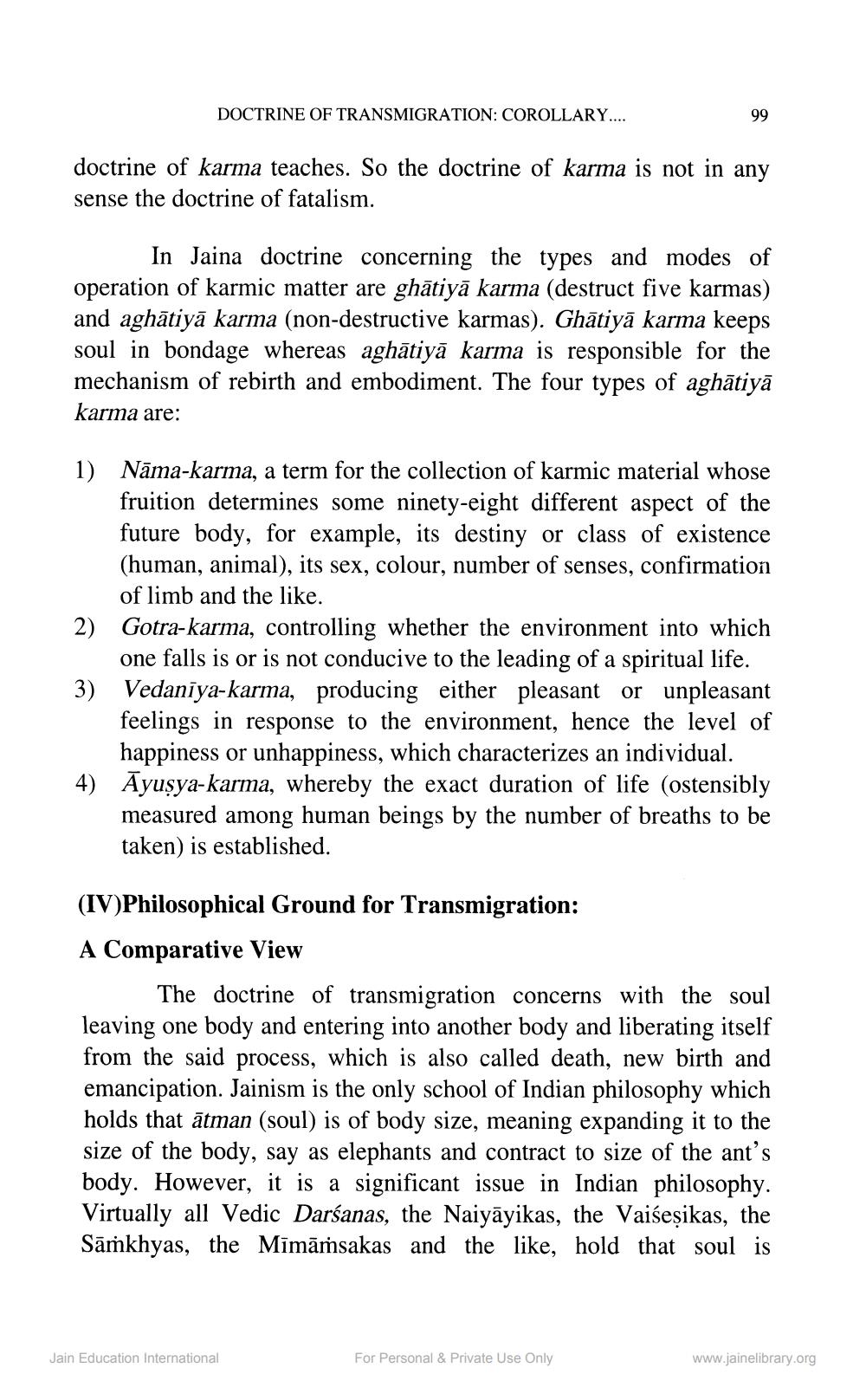________________
DOCTRINE OF TRANSMIGRATION: COROLLARY....
99
doctrine of karma teaches. So the doctrine of karma is not in any sense the doctrine of fatalism.
In Jaina doctrine concerning the types and modes of operation of karmic matter are ghātiyā karma (destruct five karmas) and aghātiyā karma (non-destructive karmas). Ghātiyā karma keeps soul in bondage whereas aghātiyā karma is responsible for the mechanism of rebirth and embodiment. The four types of aghātiyā karma are:
1) Nāma-karma, a term for the collection of karmic material whose
fruition determines some ninety-eight different aspect of the future body, for example, its destiny or class of existence (human, animal), its sex, colour, number of senses, confirmation
of limb and the like. 2) Gotra-karma, controlling whether the environment into which
one falls is or is not conducive to the leading of a spiritual life. 3) Vedanīya-karma, producing either pleasant or unpleasant
feelings in response to the environment, hence the level of
happiness or unhappiness, which characterizes an individual. 4) Āyuşya-karma, whereby the exact duration of life (ostensibly
measured among human beings by the number of breaths to be taken) is established.
(IV)Philosophical Ground for Transmigration: A Comparative View
The doctrine of transmigration concerns with the soul leaving one body and entering into another body and liberating itself from the said process, which is also called death, new birth and emancipation. Jainism is the only school of Indian philosophy which holds that ātman (soul) is of body size, meaning expanding it to the size of the body, say as elephants and contract to size of the ant's body. However, it is a significant issue in Indian philosophy. Virtually all Vedic Darśanas, the Naiyāyikas, the Vaiseșikas, the Sāṁkhyas, the Mīmāṁsakas and the like, hold that soul is
Jain Education International
For Personal & Private Use Only
www.jainelibrary.org




